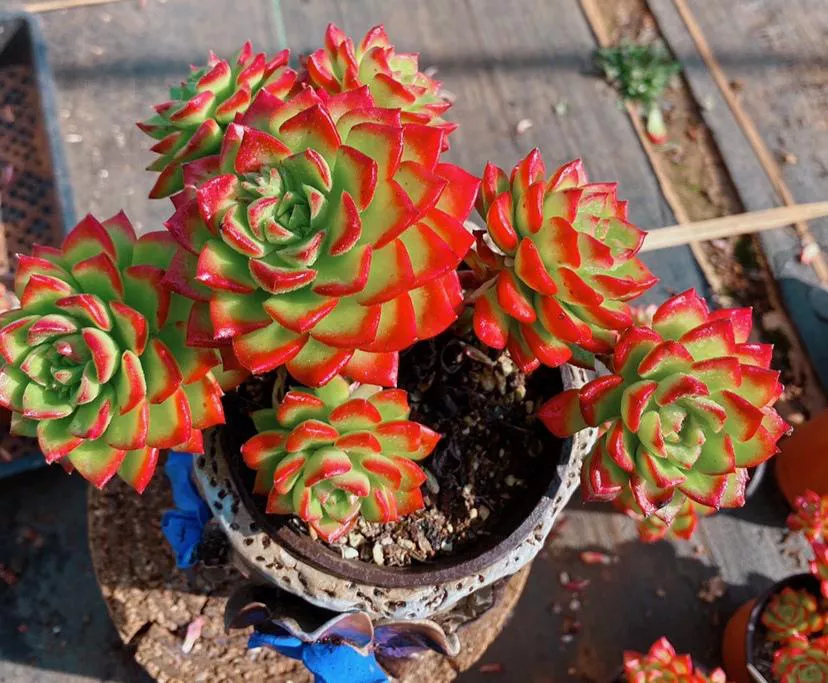Succulents, with their captivating beauty and ease of propagation, have become a favorite among both experienced gardeners and novices alike. One of the most rewarding and sustainable ways to expand your succulent collection is through cuttings.
The Basics of Succulent Cuttings
Succulent cuttings involve propagating new plants from existing ones. Understanding the fundamentals of succulent cuttings is crucial before you begin your journey.
Succulents come in various shapes, sizes, and colors, making them a diverse and exciting group of plants to work with. The term “succulent” refers to any plant that stores water in its leaves or stems, allowing it to thrive in arid conditions.
Selecting the Right Tools and Materials
To ensure successful succulent cuttings, it’s essential to gather the necessary tools and materials. Some key items include: Sharp, Clean Scissors or Shears: Use clean, sharp tools to avoid crushing or damaging the succulent tissues.
Well-Draining Soil: Choose a specialized succulent or cactus potting mix or create your own by mixing regular potting soil with perlite or coarse sand.
Containers: Small pots or trays with drainage holes are ideal for planting your succulent cuttings.
Mist Spray Bottle: To maintain proper humidity during the rooting process.
Rooting Hormone (Optional): A rooting hormone can encourage faster root development.
Preparing Your Succulent Cuttings
Successful succulent cuttings start with healthy parent plants. Here’s how to select and prepare the right cuttings:
Choose Healthy Parent Plants: Select succulents that are mature and free from disease or pest infestations. Healthy parent plants produce healthy cuttings.
Select the Right Growth Stage: Opt for stem cuttings that are actively growing but not flowering. Flowering stems may not root as readily.
Take Clean Cuttings: Using your sharp scissors or shears, make clean cuts rather than tearing or breaking the stems. Aim for a cutting that’s 2-4 inches long.
Rooting Your Succulent Cuttings
Rooting your succulent cuttings is a critical step in their development. Follow these steps for a successful rooting process:
Allow Cuttings to Callus: Place your freshly cut succulent cuttings in a dry, shady spot for a few days to allow the cut ends to callus. This prevents rot when they’re placed in the soil.
Plant the Cuttings: Plant the callused succulent cuttings in well-draining soil. Make a small hole in the soil with a pencil or stick and insert the cutting about an inch deep. Gently pat the soil around the cutting to provide stability.
Maintain Proper Humidity: Cover the cuttings with a clear plastic dome or plastic wrap to create a mini greenhouse effect. Mist the cuttings lightly to maintain humidity.
Provide Indirect Light: Place your cuttings in a location with bright, indirect light. Avoid direct sunlight, as it can scorch the cuttings.
Monitor and Adjust: Check the soil’s moisture level regularly. It should be slightly damp but not waterlogged. If you notice excess moisture, remove the plastic covering temporarily to allow the cuttings to dry out.
Transplanting Rooted Succulent Cuttings
Once your succulent cuttings have rooted and established themselves, it’s time to transplant them into their permanent homes. Follow these steps for successful transplanting:
Select the Right Containers: Choose pots or containers with drainage holes to prevent water from pooling around the roots.
Use Well-Draining Soil: Fill the pots with a well-draining succulent or cactus mix.
Gently Remove Cuttings: Carefully uproot your rooted succulent cuttings. You may need to use a stick or small trowel to loosen the roots gently.
Plant with Care: Create a small hole in the new soil and insert the cuttings, ensuring they sit at the same depth as in their original containers.
Water Sparingly: After transplanting, water the succulent cuttings lightly. Allow the soil to dry out between waterings to prevent overwatering and root rot.
Advanced Techniques for Succulent Cuttings
While the basic methods outlined above are effective, advanced succulent enthusiasts may explore additional techniques to achieve more specific results:
Leaf Cuttings: Some succulents, like echeverias, can be propagated from individual leaves. Gently twist or cut a leaf from the parent plant, let it callus, then plant it in soil.
Offsets and Rosettes: Many succulents, such as Sempervivum, produce offsets or rosettes that can be separated from the parent plant and planted independently.
Propagating Rare or Uncommon Varieties: Some succulents can be challenging to find. In such cases, consider ex
ploring grafting techniques to combine a rare succulent with a more common rootstock.
Stem Cuttings with Multiple Growth Points: Instead of single-stem cuttings, you can take longer stem cuttings with multiple growth points to create fuller plants.
Common Issues and Troubleshooting
Like any gardening endeavor, succulent cuttings may encounter challenges. Here are some common issues and tips on how to overcome them:
Rot: Overwatering and excessive humidity can lead to rot. Ensure proper soil drainage and avoid over-misting.
Lack of Roots: If your succulent cuttings are slow to root, you can dip the cut end in rooting hormone to speed up the process.
Dying or Wilting Cuttings: Ensure that your succulent cuttings receive the right amount of indirect light and that the soil is adequately moist but not saturated.
Leggy Growth: If your succulent cuttings become leggy (elongated with large spaces between leaves), they may not be receiving enough light. Adjust their lighting conditions accordingly.
Conclusion
Mastering the art of succulent cuttings is a rewarding and sustainable way to expand your succulent collection and share these delightful plants with friends and family. By understanding the basics, selecting the right tools and materials, preparing your cuttings, and following proper rooting and transplanting techniques, you can enjoy a thriving succulent garden that will bring beauty and tranquility to your living spaces. Don’t forget that patience is key in succulent propagation, and with a little care and attention, you’ll be amazed at the new succulent life you can create.


